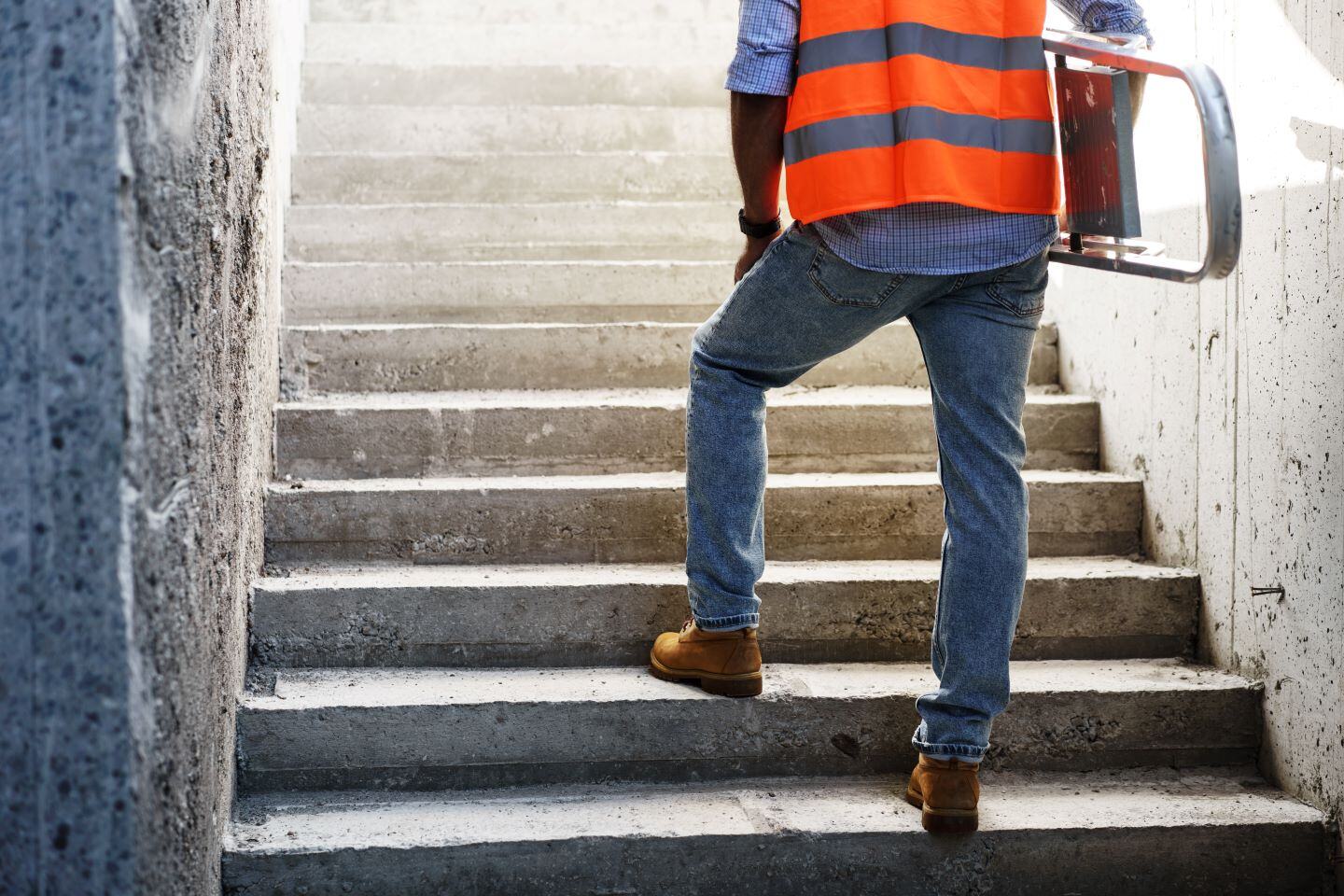From Top to Bottom: Stair Safety Tips
Stairs are everywhere, and we climb multiple flights every day. It is easy to become complacent about stair safety and ignore safe practices when you deal with them often. Read on to learn the basics of safely ascending and descending stairs to stay safe and injury free.
Anytime you aren’t paying attention to the task at hand, you are at risk. Try to keep your full attention when using stairs and avoid distractions like books and phones until you are safely at your destination.
Be aware of unsafe practices such as untied shoelaces, long clothing, stair hopping and carrying large loads.
- Stair hopping: When ascending or descending stairs, take it one step at a time, and avoid missing a stair in between. This is an unnecessary risk, no matter how strong you are or how much of a rush you are in.
- Carrying large loads: When carrying large loads, if possible, ask someone for assistance to help minimize the load. Large loads can restrict sight and center of gravity, which are both crucial for safe stair practices.
Since we deal with stairs all the time, it’s natural to think they don't pose a danger or risk. Be aware that stairs can pose a danger every time you are on them. Descending stairs, statistically, poses a greater danger than ascending them. You are more likely to fall down the stairs than up, and you’re more likely to get injured falling.
“Falls are the second leading cause of unintentional injury deaths worldwide.” -World Health Organization
Be extra cautious in unsafe conditions such as rain, ice, snow and strong winds. Leaves in the fall can cause you to slip as well. Wear stable footwear and tie the laces tightly. Shoes, such as high heels, flip flops, and other sandals may change your center of gravity or not have sufficient tread to prevent slipping. Even a simple act such as talking to someone as you climb the stairs may pose a distraction, impacting your safety and the safety of your companion.
Stairways don’t typically receive the maintenance they need since they are considered accessways and not production areas.
- Always keep one hand free to use the handrail, going up and down the stairs.
- Keep all stairs free of debris and potentially slippery substances such as ice, snow, water, oil, or grease.
- Keep passageways free of tools, equipment, and other materials.
- Practice good housekeeping in these non-production area
- When stairs and walkways are provided, use Don’t risk your safety to save a few steps or a few seconds. Hopping off loading docks or jumping over piping won’t save time or money if you are injured and can’t work.
- Resecure or replace loose handrails. Don’t assume someone else will repair or replace them. Immediately report any problems to your supervisor or take the time to fix them
- Secure electrical cords and hoses so they don’t lie across walkways. If they must be placed there, use approved cord covers whenever possible.
- Avoid carrying materials that obstruct your vision.
- Use mechanical aids such as dollies to transport bulky or heavy loads.
- Be careful when walking on asphalt and oiled surfaces because rainwater may produce an oil sheen and create slippery walking conditions.
Stair safety is crucial for preventing accidents and injuries at home, work, and in public spaces. Regular maintenance, proper handrails, and non-slip surfaces are simple yet effective measures. Remember, a few proactive steps can make a big difference in creating a safer environment for everyone.

